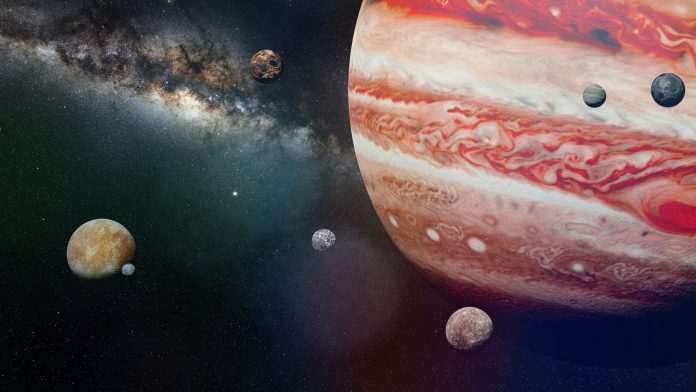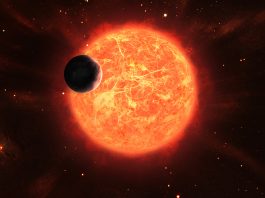The ESA has announced that the Jupiter Icy Moons Explorer (Juice) mission will be celebrated at an event in Toulouse, France, on 20 January next year.
The event will take place prior to Juice’s shipment to Europe’s spaceport in French Guiana, ready for its April launch on an Ariane 5.
The January event, hosted at Airbus Toulouse, will unveil a commemorative plaque mounted on the spacecraft. This plaque will pay tribute to the Italian astronomer, Galileo Galilei, who was the first person to view Jupiter’s icy moons through a telescope in 1609.
The Jupiter Icy Moons Explorer will make detailed observations of the giant gas planet and its three large ocean-bearing moons – Ganymede, Callisto, and Europa – with a suite of remote sensing, geophysical, and in situ instruments.
What is the Juice mission?
The exciting rocket launch will characterise Jupiter’s moons as both planetary objects and possible habitats, explore Jupiter’s complex environment in depth, and study the wider Jupiter system as an archetype for gas giants across the Universe.
Over 400 years after Galileo’s observations, humanity’s ever-long desire to research and explore worlds beyond our own lives on. Europe and its international partners are sending the Jupiter Icy Moons Explorer to examine this fascinating planet and the moons that are believed to have vast quantities of water buried under their surfaces – these quantities of water are expected to far exceed those in Earth’s oceans.
These planet-sized moons offer exciting insights into the existence of life on planets other than Earth. As such, they are some of the most compelling destinations in our Solar System.
In 2012, Juice was selected as the first large-class mission in ESA’s Cosmic Vision 2015-2025 programme. With its powerful instrument package, the Jupiter Icy Moons Explorer will provide the most detailed analysis to date of Jupiter and its water-worlds as an archetype for gas giants across the Universe. Its results will not only help astronomers dig deeper into the family history of our own Solar System, but will also place results from ESA’s fleet of exoplanet missions analysing Jupiter-like systems into context.
An extensive test campaign has taken place over several years to prepare the Juice spacecraft for its eight-year cruise through the harsh radiation and temperature environment of Jupiter, which is located more than 600 million kilometres from Earth.
The test campaign will soon be complete, with final preparations moving to Europe’s launch site in French Guiana for lift-off on an Ariane 5.
Toulouse: Juice’s final stop on Earth
The Jupiter Icy Moons Explorer has already arrived in Toulouse ahead of the January event. Here, the spacecraft will be assembled fully and tested before its shipment to French Guiana.
After three months of intense activities, including undergoing thermal vacuum testing in ESA’s Large Space Simulator, Juice’s arrival in Toulouse means that it remains on track to meet its tight interplanetary schedule.
Cyril Cavel, Juice Project Manager at Airbus, said on arrival: “It’s the first time I have seen a satellite arriving in Toulouse by plane, which shows the importance of this mission for ESA and the scientific community.
“Now, we at Airbus have to build on the great work of all of our industrial and scientific partners. I can’t wait for this ambitious mission to launch and to see the tremendous progress to human knowledge it will bring – even though we will have to wait almost ten years before it arrives at Jupiter!”
The event will take place in Airbus’ Astrolabe facility. The pre-launch event will allow guests to watch the exclusive unveiling of the Galileo plaque, as well as presentations by spokespeople from the ESA and Airbus.
Events for the Jupiter Icy Moons Explorer’s official launch will also take place, which will be hosted at both the Spaceport and ESOC. Furthermore, a launch broadcast will also be available to watch remotely via ESA Web TV.









